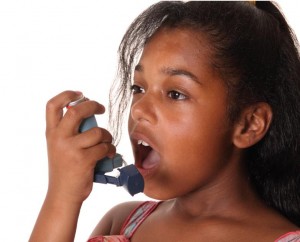Continuous Noninvasive Measurement of Pulsus Paradoxus Complements Medical Decision Making in Assessment of Acute Asthma Severity: Descriptive Statistics
 Seventy-nine patients were enrolled in this study from September 2003 to June 2005 as a convenience sample. Nine patients were excluded from the analysis as they failed to meet study asthma criteria following post hoc inspection of both outpatient and inpatient records. Of the remaining 70 patients, 19 (27.1%) were admitted to the hospital from the ED. Three patients relapsed within 72 h after hospital discharge and sought medical care. Thus, 48 patients (68.6%) had a good outcome, and 22 patients (31.4%) had a poor outcome. The median length of stay for admitted patients was 2 days. PP was successfully acquired from 63 patients during their treatment in the ED. Failure to acquire continuous BP data occurred in seven patients, resulting in no AT-PP values for these patients. Further analysis was conducted on these 63 patients. The demographic information comparing patients admitted to the hospital with those discharged from the hospital is illustrated in Table 1, which shows no significant differences in gender, smoking, and pulse rate.
Seventy-nine patients were enrolled in this study from September 2003 to June 2005 as a convenience sample. Nine patients were excluded from the analysis as they failed to meet study asthma criteria following post hoc inspection of both outpatient and inpatient records. Of the remaining 70 patients, 19 (27.1%) were admitted to the hospital from the ED. Three patients relapsed within 72 h after hospital discharge and sought medical care. Thus, 48 patients (68.6%) had a good outcome, and 22 patients (31.4%) had a poor outcome. The median length of stay for admitted patients was 2 days. PP was successfully acquired from 63 patients during their treatment in the ED. Failure to acquire continuous BP data occurred in seven patients, resulting in no AT-PP values for these patients. Further analysis was conducted on these 63 patients. The demographic information comparing patients admitted to the hospital with those discharged from the hospital is illustrated in Table 1, which shows no significant differences in gender, smoking, and pulse rate.
However, the patients who were admitted to the hospital displayed statistically higher AT-PP values after treatment, as illustrated in Table 1. Patients who were admitted to the hospital also displayed higher respiratory rates pretreatment and posttreatment compared to patients who had been discharged from the hospital, and lower pulse oximetric saturation values posttreatment. The patients who were admitted to the hospital were older than those who had been discharged from the hospital. A significant difference in posttreatment AT-PP was observed between patients who had been discharged from the hospital and those who had been admitted.
Signal detection theory-based analysis of the sensitivity and specificity of AT-PP in arriving at the hospital discharge/admit disposition was significant for the PP measurement at a time 60 min following standardized asthma treatment. The PP threshold, which maximized sensitivity and specificity, was 11.3 mm Hg (Fig 2, top, A). The mean Wilcoxon AUC-ROC was 0.82 (95% CI, 0.69 to 0.99) [Fig 2, top, A, inset).
Table 1—ED Patient Demographics and Vital Signs
| Variables | Discharged Patients | Admitted Patients! | Statistic | p Value |
| Female gender, % | 24 (53) | 7 (39) | X2 = 1.073 | 0.300 |
| Age, yr | 38.8 (12.0) | 51.8 (22.2) | t(19.6) = 2.30 | 0.033! |
| History of smoking, % | 20 (44) | 7 (39) | X2 = 0.162 | 0.687 |
| Pre-TX respiratory rate | 20.1 (5.3) | 25.3 (8.4) | t(22.5) = 2.44 | 0.023! |
| Post-TX respiratory rate | 20.1 (4.2) | 25.5 (8.4) | t(20.7) = 2.60 | 0.017| |
| Pre-TX pulse oximetry, % | 96(3) | 95 (5) | t(20.1) = 1.13 | 0.270! |
| Post-TX pulse oximetry, % | 97 (2) | 94 (4) | t(21.6) = 2.78 | 0.011! |
| Pulse rate, beats/min | 102.0(10.1) | 97.8 (8.5) | t(59) = 1.62 | 0.111 |
| Pre-TX AT-PP | 11.5 (7.2) | 13.2 (7.4) | t(53) = 0.64 | 0.528§ |
| Post-TX AT-PP | 9.1 (6.0) | 17.6 (8.4) | t(61) = 4.40 | < 0.001§ |
Figure 2. Plots of AT-PP sensitivity and specificity as a function of PP threshold in asthma disposition during posttreatment (top, A) and pretreatment (bottom, B). The PP threshold, which maximized sensitivity and specificity, is identified. The cost of care is illustrated on the right-hand axis (inserts). Corresponding receiver operator curves are shown, in which the symbol “*” denotes the sensitivity and specificity, which maximized the AUC.

Leave a Reply